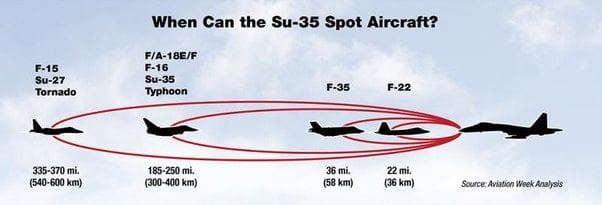The Radar War
A phenomenon was noticed during the Second World War that certain shapes affected the ability for early radar to detect aircraft. When considering the material of the aircraft, it was also noticed that non-metallic materials like wood added to the re

A phenomenon was noticed during the Second World War that certain shapes affected the ability for early radar to detect aircraft. When considering the material of the aircraft, it was also noticed that non-metallic materials like wood added to the reduced detection by radar. While this effect was not utilised in any major way until the science was applied to prototypes during the 1980s, it was a continuation of a long standing rivalry between aircraft and anti-air technologies throughout the Cold War.
One of the most well known rivalries of the early Cold War came from a famous incident where an SA-2 Anti-Aircraft missile was able to shoot down an American U-2 Spy Plane over the Soviet Union in 1960. The U-2 was designed to fly over enemy airspace at extremely high altitude, where most aircraft and anti-aircraft missile systems could not hit the U-2. While it was assumed that the radar could see the U-2, it was believed that the missile could not reach the aircraft. To their surprise, the SA-2 was able to reach the spy plane and knock it down, proving that even early missiles could eliminate aircraft hiding well above the target.
The SA-2 would earn much of its added fame by terrorising American attack aircraft over Vietnam in the 1960s and into the 1970s. Special “Wild Weasel” missions were formed in order to distract the SA-2 radar operators from targeting the bombers by using trained pilots to encourage the SA-2’s to fire at them in their more well equipped planes. These planes often used electronic jamming equipment along with piloting skills to evade SA-2 missiles, later using an anti-radar “Shrike” missile that tracked the radar beam from the SAM radar site. The next systems to be presented were the SA-3 Goa and SA-6 Kub systems, used in the Middle East conflicts of the 70s and early 80s, they were eventually met with the first drones that added non-lethal targets to the radar screen with the intent to deplete the 3-missile launchers of the SA-6’s mobile firing units.
Stealth technology during the 1991 Gulf War enabled the first F-117 bombers to succeed in their missions without any losses. It was surprising that just a few years later, one F-117 was shot down by an older SA-3 Goa missile over Yugoslavia. Stealth was designed to not go above a missile shield nor to go through it rapidly at low altitude, but as a means to cloak an aircraft from detection. If a radar cannot lock on a plane, a missile cannot be launched to intercept the target, and the attacking plane has a better chance at eliminating the radar site at closer range. Stealth did not make the planes invisible at all ranges however, and repeat tactics likely could lead to the loss of an advanced aircraft.
So what have we learned about the recent Radar War from the lessons of the Cold War and the loss of the F-117? Much like the past generations of missiles, new improvements to Stealth technology from the F-117 to F-22, B-2 and F-35 have been competing with more powerful radars that are designed to detect the detectable Stealth aircraft at closer ranges. The modern “Shrike”, or anti-radar missiles currently match or exceed S-300 and S-400 Missile detection and firing distances when Stealth is able to close the range of the massive radar site for the S-300 sites. While the S-300 and S-400 can likely see an F-35 coming, it likely has difficulty in locking on to the target so a missile could destroy an F-35. This is not only due to the F-35’s stealth design and materials, but because of electronic countermeasures and powerful radars as well as assistance from conventional planes, decoys and drones in the mission process. This information of course has not been made fully public, but it is likely the case that other hacking, electronic interference and intelligence assets also burdened the latest S-300 units before they were neutralised. Interceptor aircraft are also used of course, but their missiles will also have a reduced firing range against a Stealth intruder, with the F-35 having speed as another valuable asset in its suite of capabilities.
It is not clear where the next evolution will come from, but it looks to involve drone and missile swarms that are already being challenged by newer systems. The use of AI and more powerful radars will outpace human operators of many of these systems. A Vietnam Shrike situation taking out the radar crew may become less likely as systems become more spread out and automated. As older systems prevail in many regions, overburdened and under-trained operators may become the perpetrators of negligence, as seen in the downing of two civilian airliners, one over Ukraine and another over Iran in the last few years. Energy weapons have entered the battlefield as well, but not at the distances current missiles have been able to achieve. The only assurance is that new technology is always being developed.


































